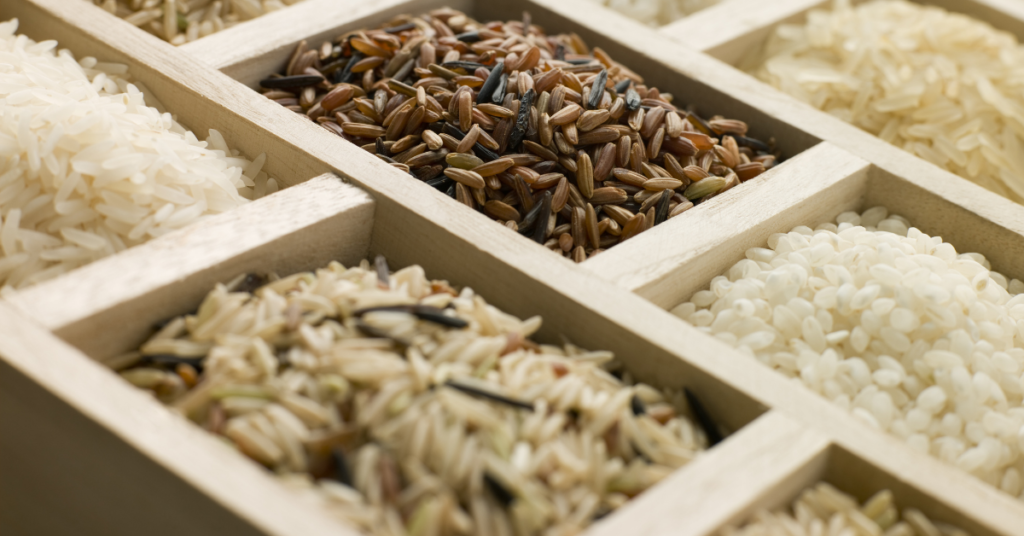Dive into the world of this dynamic grain, brimming with vital nutrients that every savvy prepper craves. Why is rice the must-have staple? Read on to find out!
In Short:
In short, white rice is the best type of rice for long-term prepping because of its extended shelf life.
However, diversifying your storage with brown and wild rice will provide additional nutrient options.
Introduction
Unlock the secret to ultimate preparedness: Best Rice for Prepping!
Importance of Rice in Prepping
Rice is not only one of the most popular and frequently consumed foods worldwide, but it’s also one of the best option for long-term food storage.
It’s incredibly nutritious, providing energy from its abundant carbohydrates, complemented by protein, and vital vitamins and minerals like vitamin B1, iron, and magnesium.
Storage-wise, rice is a top choice. When correctly stored in a cool, dry place with a proper seal, white rice, for instance, can last up to 30 years!
Its relatively low cost and long shelf life make it a super-efficient food source for any prepper.
Overview of Rice Types
Multiple types of rice would work well for prepping, each presenting unique characteristics, nutritious values, tastes, and cooking methods.
Let’s break down a few:
White Rice
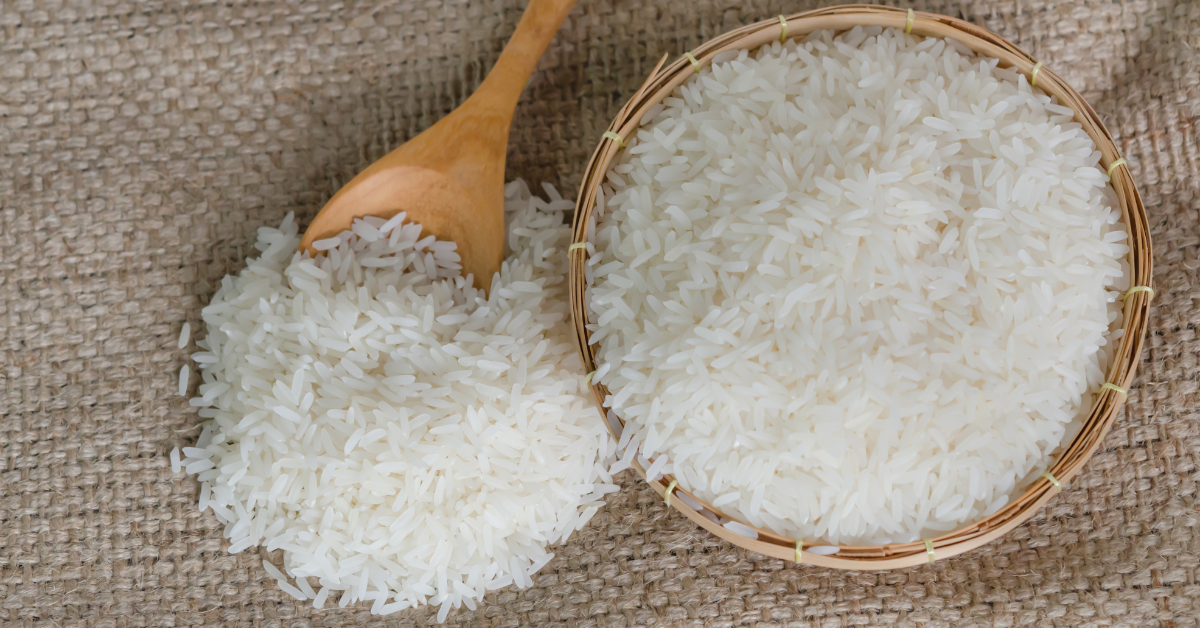
This type is perfect for long-term storage due to its extended shelf life.
White rice is milled and polished to remove the bran, germ, and husk, leading to a lighter, less nutrient-rich grain, but excellent for lengthy storage times.
Brown Rice
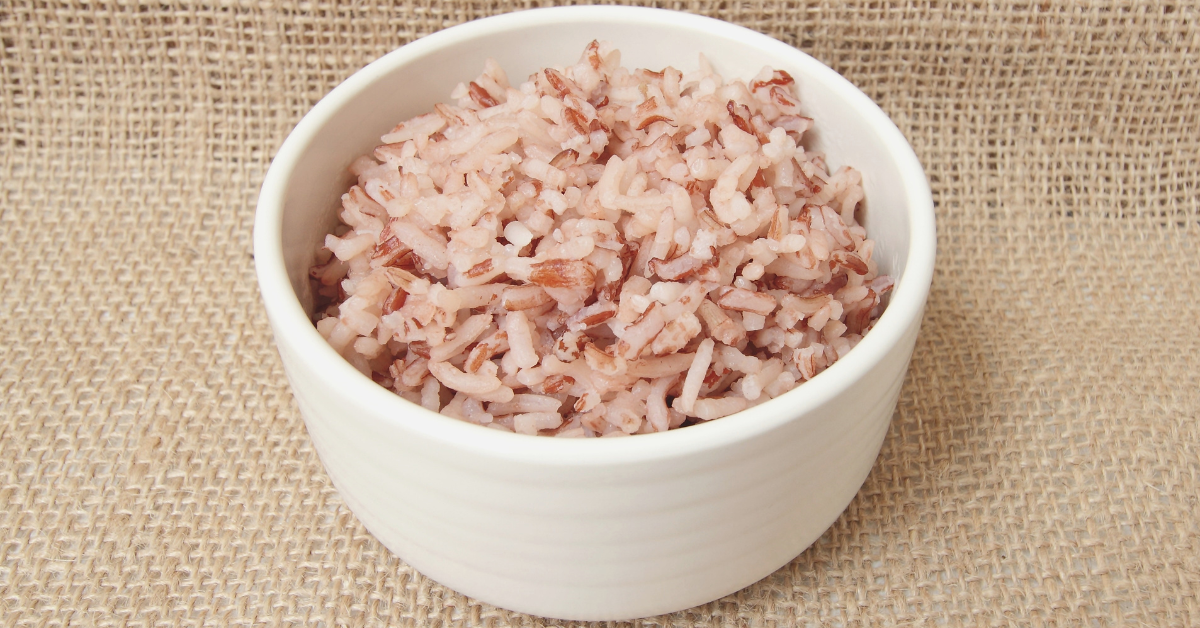
Brown rice is a healthier option compared to white rice. It contains plenty of fiber along with essential vitamins and minerals. Yet, due to its oil content from the bran layer, its storage life is significantly shorter.
Wild Rice
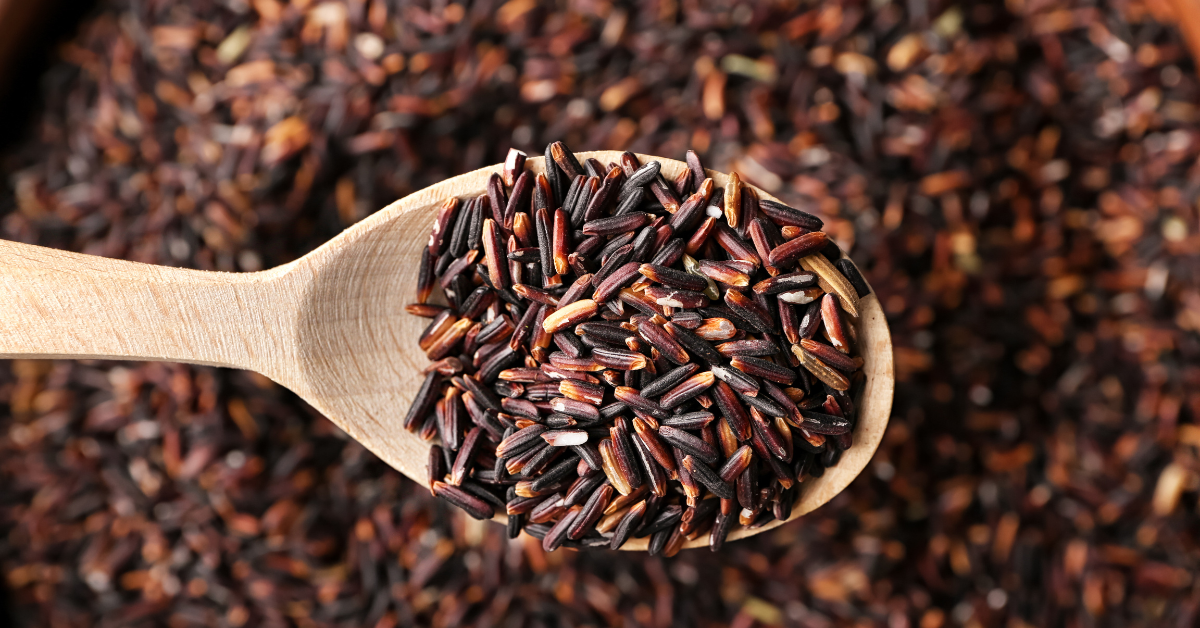
Wild Rice is high in protein, dietary fiber, and B vitamins. Like brown rice, its storage time is limited due to its higher fat content. However, it is a fantastic nutrient-rich addition to any meal.
Here’s a table summarizing the three varieties:
| Rice Type | Nutrient Value | Estimated Shelf Life |
|---|---|---|
| White Rice | Lower | Up to 30 years |
| Brown Rice | Higher | Up to 6 months |
| Wild Rice | Highest | Depends on storage |
Understanding Rice for Prepping
Rice, essential for over half the world, is crucial in a prepper’s pantry. This grain provides long-term storage and varied meal options.
Here, we’ll discuss its importance in prepping, focusing on shelf life, nutrition, and different types.
Rice Types and Their Importance
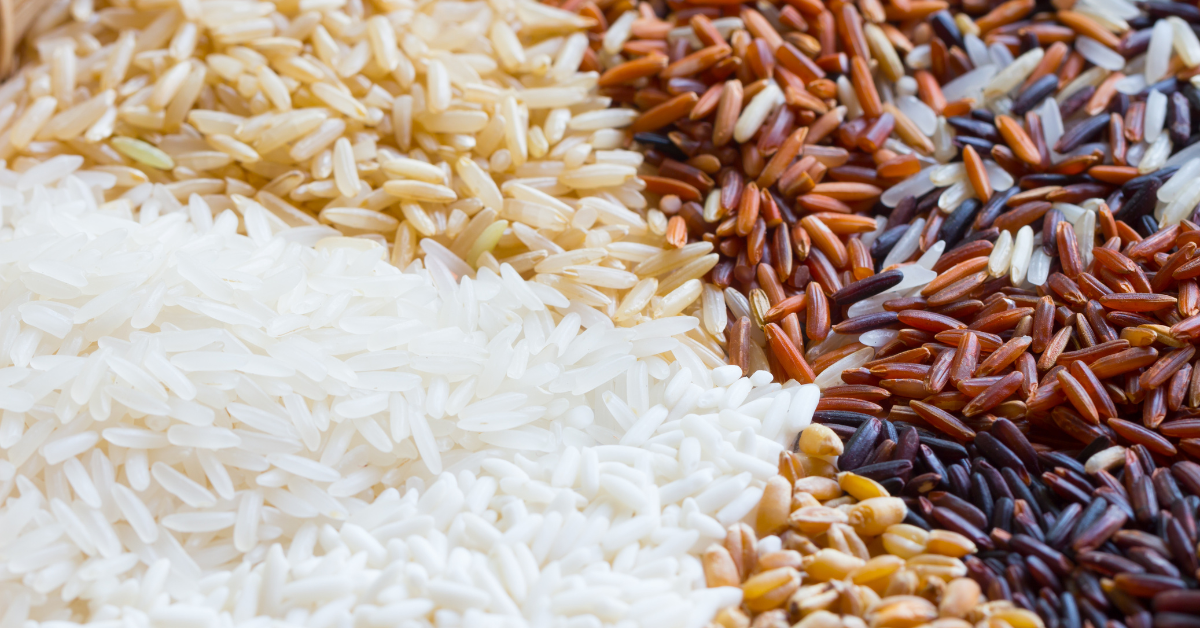
Various rice varieties have unique attributes and merits. Below is a summary of the most common rice types and their relevance:
Jasmine: Originating from Thailand, Jasmine rice is a long-grain variety known for its sweet aroma and stickiness when cooked. It’s high in carbohydrates, making it energy-rich, an important factor for us preppers.
Basmati: Basmati rice, native to India, is a slender long grain that elongates when cooked and is less sticky compared to Jasmine. It has a low glycemic index, making it a healthier option for individuals monitoring their blood sugar levels.
Brown: Brown rice is whole grain rice with only the outer hull removed, retaining its nutrient-rich bran and germ. Though it takes longer to cook, its high fiber content and heart-health benefits make it a nutritious staple.
Wild: Wild rice isn’t rice but a grass that grows in marshy areas. Even so, it’s a common part of a prepper’s food storage due to its high protein content.
Long Grain: Typically light and fluffy when cooked, long grain rice, such as American long grain or Basmati, is a versatile choice for various meals.
Parboiled: Parboiled, or converted rice, is partially boiled in the husk. This process drives nutrients from the husk into the grain, improving its nutritional content. It also extends the shelf life, a huge advantage for preppers.
Here’s a quick comparison table highlighting some features:
| Rice Type | Origin | Nourishment | Texture |
|---|---|---|---|
| Jasmine | Thailand | High carbohydrate | Sticky |
| Basmati | India | Low glycemic index | Non-sticky |
| Brown | Various | High fiber | Chewy |
| Wild | USA | High protein | Nutty |
| Long Grain | Various | Versatile | Fluffy |
| Parboiled | Various | High nutrition | Firm |
Best Rice for Prepping
We all know that rice is a staple food for millions of people worldwide due to its ease of preparation, affordability, and versatility in different cuisines. Similarly, for preppers, rice is a go-to food item because of its long shelf life and energy-rich properties. Let’s dive into the best types of rice for prepping.
Jasmine and Basmati Rice
Jasmine and Basmati rice: These varieties are well-loved for their fragrant aroma and unique flavor. Both are long-grain varieties and are often found in Asian and Middle Eastern cuisines, respectively.
Jasmine and Basmati rice have a shelf life of approximately 4-5 years when properly stored, making them excellent choices for prepping.
Brown and Wild Rice
Brown and Wild rice: Both Brown and Wild rice are whole grains, meaning they still contain their nutrient-rich bran and germ. They are excellent sources of dietary fiber, vitamins, and minerals.
Though Brown and Wild rice have shorter shelf lives, typically 6 months to a year, due to the oil in their bran layers, they offer unmatched nutritional value.
Long Grain and Parboiled Rice
Long Grain and Parboiled rice: These rice varieties are excellent for prepping due to their extended shelf lives. Long Grain rice, like Jasmine and Basmati, can last up to 4-5 years.
Parboiled, or converted rice, undergoes a steaming process before milling, which pushes nutrients from the bran into the grain, enhancing its nutritional value and extending its shelf life to nearly 30 years. [1]
Here’s a quick comparison table:
| Type of Rice | Taste | Shelf Life | Nutrients |
|---|---|---|---|
| Jasmine/Basmati | Unique, fragrant aroma | 4-5 years | Rich in carbohydrates and proteins |
| Brown/Wild | Nutty | 6 months-1 year | High in fiber, vitamins, minerals |
| Long Grain/Parboiled | Mild, neutral | 4-5 years/30 years | Rich in nutrients pushed from the bran into the grain |
Storing Rice for Long-Term Prepping
If you’re like us, a savvy prepper, rice will undoubtedly be in your survival food stockpile.
Not only is rice a staple food in many cuisines worldwide, but it’s also lightweight, easy to store, and rich in energy-boosting carbohydrates. However, storing rice properly is essential for maintaining its quality and longevity.
Storage Methods and Considerations
When storing rice for long-term prepping, there are different methods to consider for optimal preservation.
Airtight Containers We found using an airtight plastic, glass, or metal container is a great option to keep your rice dry and protected from pests. Ensure the airtight containers are food-grade quality and safe for long-term food storage.
Mylar Bags: These are a popular method for rice storage among preppers. Mylar bags, when used with oxygen absorbers, offer excellent long-term storage solutions, blocking light and providing an oxygen barrier to significantly extend rice’s shelf life.
Find out more about Mylar Bags.
Vacuum-Sealed Bags: Vacuum-sealing rice in bags can further elongate preservation since it removes air from the packaging, reducing oxidation and deterring bugs.
After we pack our rice in our chosen storage type, we store them in a cool, dry place, like our basement. High temperatures can degrade stored rice, particularly brown rice, which has a higher oil content and turns rancid quicker.
Killing Rice Bugs: We also freeze the rice for a week before storing it to kill any potential rice bugs. This will kill any pests that may reside in the rice, including their larvae and eggs.
Vacuum Sealing Vs. Original Packaging
Vacuum Sealing: If vacuum sealing bags are not readily accessible, consider using the vacuum seal feature on your food saver machine. This method also eliminates oxygen, thus extending shelf life.
Original Packaging: If the rice comes sealed in sturdy, high-quality packaging, you can keep it as is. However, remember that the contents are exposed to air, and potential bug infestation once opened. [2]
In a nutshell, the best way to store rice for long-term prepping largely depends on your available resources. The key point to remember is that rice, kept in a cool, dry place and sealed from oxygen, can last up to 10-30 years, making it an ideal staple for any prepper’s food storage.
Cooking Rice in Emergency Situations
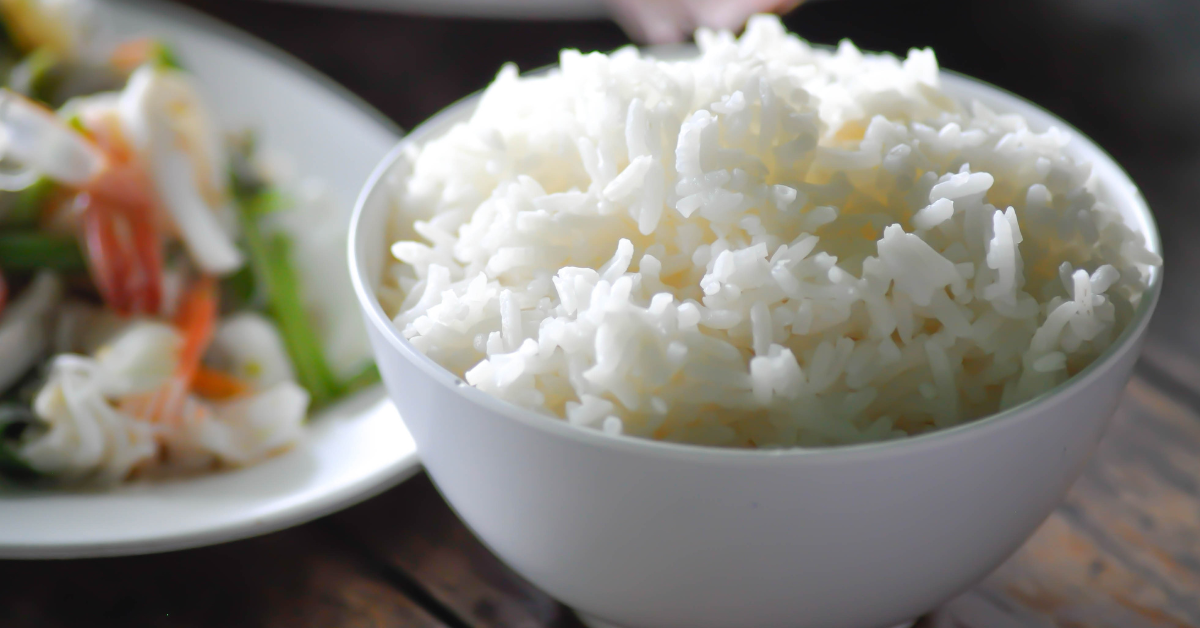
When preparing for emergencies, stockpiling and storing food is a crucial element. Among the top foods to consider, rice should be in your pantry due to its long shelf life, cost-effectiveness, and versatility.
Cooking Tips and Methods
Cooking rice during an emergency situation doesn’t need to be complex. Even with minimal resources, rice can be transformed into a filling meal that provides the necessary carbohydrates and sustenance your body needs.
Tip: Mix your rice with beans so you also get healthy proteins! You can store beans the same way as rice, but for more informations read our best beans for prepping article.
Different Types, Water-to-Rice Ratio, Outdoor Cooking
Among varieties of rice, you may opt for white, brown, or parboiled; each requires a different cooking method and water-to-rice ratio. Here’s a quick guide to help:
| Rice Variety | Water-to-Rice Ratio | Cooking Time |
|---|---|---|
| White | 2:1 | 18-20 mins |
| Brown | 2.5:1 | 45-50 mins |
| Parboiled | 2.5:1 | 20-25 mins |
You might have to use a makeshift stove or an open fire for outdoor cooking. Remember to cover your pot or pan to ensure even heating of the grains.
Variety of Rice Dishes
The versatility of rice allows it to be used in a wide array of dishes, a vital feature in situations where ingredients are limited. A simple serving of rice can be paired with canned goods, dried meats, or vegetables readily available from your survival kit.
It’s a staple food that’s simple to cook, especially if you consider the proper water-to-rice ratio and adjust cooking times accordingly for different types. Furthermore, the variety of dishes you can create with rice ensures a more varied food experience in critical scenarios.
Additional Considerations and Safety
When prepping and storing large amounts of rice for long-term use, it’s crucial to consider certain factors that could affect your rice supply’s quality, safety, and even variety.
Safe and Diverse Rice Storage
White rice stores longer but lacks some nutrients found in other varieties. Store a mix of rice types like brown, red, and black for balanced nutrition.
White vs. Instant Rice, Long-Term Safety
White rice and instant rice should not be confused. Though both types of rice are processed, instant rice undergoes further processing to provide quicker cooking times – a quality not particularly useful for prepping when it compromises the storage longevity. For this reason, white rice is always recommended over instant rice for long-term storage.
Rotating Stored Rice, Storing Other Grains
A good rule of thumb for long-term food storage is rotation.
Even with a shelf life of up to ten years—assuming proper environmental conditions—rotating your white rice storage is crucial in maintaining its freshness and quality. Use the oldest stocks first and replace them with newer ones.
Besides rice, consider storing other grains, like quinoa or oats, for added nutritional variety. Although these grains don’t hold as long as rice, they can offer an array of different meals and nutrient profiles that improve the overall food security of your prepping efforts.
In conclusion, prepping is about balance and preparation. Storing a variety of rice and grains, rotating your supply, and understanding the differences between types of rice can ensure that you’re ready for any situation.
Conclusion: Picking the Right Rice for Prepping
Rice is vital in emergency planning because of its shelf life, cost, and nutrition. Given the plethora of varieties, choosing can be daunting. Here’s a concise comparison:
White Rice:
- It lasts up to 30 years when sealed and stored right.
- Lower in nutrients due to processing.
Brown Rice:
- Shelf life of about 6 months.
- Higher nutrient and fiber content as a whole grain.
Parboiled Rice:
- The nutritional content is close to brown rice.
- Longer shelf life than brown rice, making it a good prepping option.
Here’s a summary of each type’s key attributes for your quick reference:
| Type of Rice | Shelf Life | Nutritional Content | Preparation Time |
|---|---|---|---|
| White Rice | Up to 30 years | Low | Short |
| Brown Rice | Up to 6 months | High | Long |
| Parboiled Rice | Longer than Brown Rice | High | Medium |
In conclusion, the best rice for prepping ultimately depends on your specific needs, priorities, and circumstances. White rice is your best bet if you prioritize shelf life above all else. However, brown or parboiled rice may be more suitable if nutritional content is a high concern. The trick lies in balancing longevity, nutrition, and ease of preparation.
Plan wisely, and happy prepping!
